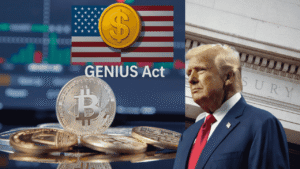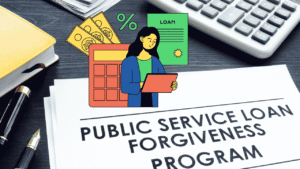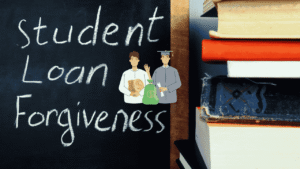|

Reviewd by: Dileep K Nair
Senior Editor & Expert Reviewer
Moody’s Analytics chief economist Mark Zandi has issued a stark warning that the US economy is perilously close to slipping into recession, with recent data on jobs, spending and manufacturing painting a grim picture. In a series of posts on X last week, Zandi described the situation as a “jobs recession,” noting that payroll employment has barely grown since May and could be revised downward further, potentially revealing outright job losses. “It’s a jobs recession,” he wrote on September 5.
“Payroll employment declined in June, and while it was up in July and August, the increases were on the margin and seem likely to be revised away.” He pointed to significant job cuts in goods-producing sectors like manufacturing, mining and construction, as well as federal government roles, with only healthcare and hospitality providing meaningful gains.
The alert comes as the Bureau of Labor Statistics released its August jobs report on September 5, showing just 50,000 net job additions, well below expectations and an unemployment rate ticking up to 4.3%. Revisions to prior months slashed an additional 100,000 jobs from earlier estimates, underscoring a hiring slowdown that has averaged only 85,000 positions monthly in 2025, compared to a pre-pandemic norm of 177,000.
Zandi, who accurately foresaw the 2008 financial crisis, emphasized that consumer spending has flatlined since late last year, marking the weakest performance since the Great Recession. He predicts annual inflation, currently at 2.7%, could climb toward 4% by early 2026, fueled by policy-driven pressures.
Speaking to Fortune on September 5, Zandi reiterated that the economy may already be in recession, with states representing nearly a third of US GDP either in downturns or at high risk. “The economy is on the edge of recession: in fact, we may already be in one,” he told the outlet.
This assessment aligns with broader indicators, including a contraction in manufacturing activity as measured by the ISM index and stagnant construction spending. The Atlanta Fed’s GDPNow tracker has downgraded third-quarter growth estimates to just 1.2% annualized, down from 2.5% earlier in the summer.
Zandi’s concerns echo those from other economists, who attribute the slowdown to a mix of factors including higher tariffs on imports, restrictive immigration policies curbing labor supply, and fiscal austerity measures like cuts under the Department of Government Efficiency (DOGE) initiative. In an August 22 interview with Fortune, Zandi pegged recession odds at nearly 50-50, with the greatest vulnerability from late 2025 into early 2026.
Federal Reserve officials, meanwhile, have signaled potential rate cuts at their September meeting, but rising inflation complicates the path forward. As Zandi noted in a CNBC appearance last month, “Recession risks are really high,” driven by labor market weakness and policy headwinds.
The warning arrives amid market turbulence, with the S&P 500 dropping 3% last week on recession fears, though it remains up 8% year-to-date. Investors are closely watching upcoming data, including the September jobs report and second-quarter GDP revisions, for signs of further deterioration.
Policy Shifts and Post-Pandemic Pressures Driving the Slowdown
The US economy’s current fragility stems from a confluence of post-pandemic adjustments and new policy shocks that have eroded the resilience seen in 2024. Last year’s robust growth, fuelled by strong consumer spending and a tight labor market, has given way to deceleration as higher interest rates from the Fed’s inflation-fighting campaign bite deeper.
But the sharper downturn in 2025 traces back to the implementation of broad tariffs on Chinese goods and other imports, which began escalating in March under the Trump administration’s trade agenda. These levies, aimed at protecting domestic industries, have instead raised input costs for manufacturers and retailers, contributing to a contraction in factory output for five straight months.
Immigration restrictions have compounded the issue by limiting workforce growth. Foreign-born workers, who accounted for much of the post-2020 labor surge, have seen net inflows drop sharply, leading to labor shortages in sectors like construction and agriculture. Meanwhile, federal spending cuts under DOGE have trimmed government payrolls, with Zandi highlighting in an August X post that these reductions are showing up in delayed BLS revisions.
Economic indicators reflect this strain: The Conference Board’s Leading Economic Index has declined for 28 consecutive months, signaling prolonged weakness, while consumer confidence dipped to a six-month low in August amid job concerns.
Recent developments have amplified risks. July’s contentious jobs report, which initially showed modest gains but was heavily revised downward, confirmed a sharp slowdown, with GDP growth for the first half of 2025 revised to 1.7% annualized below the 2.4% forecast earlier in the year. Stagflation fears are mounting, as tariffs push up prices even as growth falters.
UBS economists now see a 93% recession probability based on an inverted yield curve and credit stresses, while Goldman Sachs raised its odds to 35% in March. Deloitte’s Q2 forecast warns of a possible recession starting in Q4 2025 if bond market turmoil persists. Zandi’s state-level analysis, detailed in an August 24 X post, shows vulnerabilities in places like Wyoming, Montana and Massachusetts, while powerhouses California and New York hold steady but face slowing momentum.
How a Potential Recession Could Hit Households, Businesses and Investors
The looming recession threat is already rippling through everyday American life, hitting households, small businesses and investors hardest while sparing sectors less tied to cyclical swings.
Families Face Rising Costs and Job Insecurity
For average families, the slowdown translates to squeezed budgets and job insecurity. Zandi warned in interviews that rising prices for essentials like food and transportation will become “impossible to ignore,” with inflation potentially nearing 4%. Consumer spending, flat since late 2024, reflects this pressure, as wage growth lags behind cost increases.
Job disruptions are acute in goods-related industries, where over 200,000 positions have vanished this year, affecting blue-collar workers in manufacturing and mining. Borrowers face higher rates on mortgages and auto loans, exacerbating housing market woes, with affordability at historic lows.
From GlimMarket’s vantage, these dynamic risks a self-reinforcing cycle: As layoffs spread which is already evident in federal and construction sectors, consumer pullback could deepen the downturn, particularly for lower-income households reliant on discretionary spending.
Tariffs and Credit Tightening Squeeze Small Firms
Small enterprises, especially those in trade-exposed sectors, are bearing the brunt of tariffs and supply chain snarls. Imported materials now cost 10-20% more, crimping margins and forcing price hikes that deter customers. Manufacturing and retail firms report order declines, with the NFIB small business optimism index at a two-year low. Access to credit is tightening as banks grow cautious amid recession signals, making expansion or hiring riskier.
A practical observation here: Many small exporters are losing competitiveness abroad due to retaliatory tariffs, a trend GlimMarket analysts see accelerating if trade tensions persist.
Market Volatility and Portfolio Risks Emerge
Equity and bond markets have reacted volatilely, with global commodity sell-offs flashing warning signs. Investors in cyclical stocks like industrials face drawdowns, while safe-havens like Treasuries rally. Retirement portfolios tied to 401(k)s could see 10-15% hits if a downturn materializes, per Goldman estimates. Wealth effects from falling asset prices may further curb spending among higher earners.
Economists Warn Policy Choices Could Deepen Risks
The data leaves little doubt: The US economy’s trajectory demands urgent attention, with policy choices at the heart of the vulnerability. Zandi’s “recession by design” framing, echoed in March interviews, captures how tariffs, immigration curbs and fiscal cuts have engineered this slowdown contrasting with self-inflicted slumps of past cycles.
Forward-looking, the Fed’s ability to ease rates will be key, but with inflation rebounding, aggressive cuts risk reigniting price pressures. Expect 50 basis points of relief by year-end, yet that may not suffice if job losses accelerate.
Industry breakdowns offer clues: One-third of sectors are contracting, per Zandi’s August assessment, led by those hit by trade barriers and labor shortages. Manufacturing could shed another 150,000 jobs by Q1 2026 if tariffs expand, while services hold up better but face spillover from consumer weakness. Global factors, like softening demand from Europe and China, add downside risks, potentially trimming 2026 GDP by 0.5%.
Practical guidance centers on resilience: Businesses should hedge supply chains and build cash buffers; while economists note households may face increased financial stress if layoffs spread and inflation accelerates. Investors might shift to defensive assets like utilities or bonds, eyeing opportunities in post-recession recoveries.
This moment recalls 2008’s early signals, but with policy levers more constrained. As an experienced analyst would observe, avoiding a deeper rut hinges on swift tariff recalibrations and immigration tweaks otherwise, the “Trumpcession” label, floated by Reuters in March, may stick. The economy’s fate isn’t sealed, but the window for course correction is narrowing fast.
This article draws on public sources as of the date of publication, to report on the US economy’s recession risks, as highlighted by Moody’s Mark Zandi. GlimMarket has no financial stake in the entities discussed and offers no financial advice or opinions. Economic conditions may shift; readers should verify independently and consult trusted sources before making decisions.
In our commitment to ensuring accuracy and credibility, we prioritize the use of primary sources to support our reporting. This includes white papers, government data, original reporting, and interviews with industry experts. We also reference original research and findings from reputable publishers when appropriate. We always ensure that proper attributions and citations are provided with source links, within the article itself, to uphold transparency and fair practice. To learn more about the standards we uphold in producing accurate and unbiased content, please refer to our Editorial Policy & Guidelines.
- NDTV World News
- The Times of India
- CNBC various reports (e.g., August 18, 2025; March 25, 2025) (https://www.cnbc.com/video/2025/08/18/recession-risks-are-really-high-says-moodys-mark-zandi.html , https://www.cnbc.com/2025/03/04/stagflation-fears-swirl-as-trump-tariffs-take-effect-and-economy-slows.html , https://www.cnbc.com/2024/12/12/economy-faces-some-potential-storms-in-2025-economist-mark-zandi.html, https://www.cnbc.com/2025/08/04/contentious-july-jobs-report-confirms-the-us-economy-is-slowing-sharply.html, https://www.cnbc.com/2025/03/18/slower-economic-growth-is-likely-ahead-with-risk-of-a-recession-rising-according-to-the-cnbc-fed-survey.html)
- Fortune (September 5, 2025; August 22, 2025)
- Financial Times (recent article on US recession status)
- Reuters (March 4, 2025)
- Wall Street Journal (June 8, 2025; March 31, 2025)
- Business Insider (September 2025 jobs report analysis)
- Deloitte US Economic Forecast Q2 2025
- SP Global
- Conference Board US Leading Indicators (August 21, 2025)
- Mark Zandi's X posts (various dates in 2025) (https://x.com/Markzandi/status/1957090986863038850 , https://x.com/Markzandi/status/1957090986863038850
- https://www.ainvest.com/news/ubs-warns-93-recession-risk-economy-2025-2509/
About the Authors

Archana N
Senior Writer & Content Strategist
Archana N is a seasoned content strategist and senior writer with over 12 years of experience…

GlimMarket Editorial
Editors, Writers, and Reviewers
The GlimMarket Editorial Team is responsible for developing and maintaining the…

Dileep K Nair CMA (US)
Senior Editor & Expert Reviewer
Dileep K Nair is a Certified Management Accountant (CMA) from IMA, USA and brings…
Related Articles

US–EU Trade Deal Brings 15% Tariff on Imports: What It Means for Businesses, Consumers, and Investors

Historic US–EU Trade Deal Slaps 15% Tariff on EU Imports: Who Wins and Who Loses?

India, UK Sign Landmark Free Trade Agreement: 99% Tariff Free Access, Visa Boost, $34 Billion Trade Surge Expected

Fed Governor Waller Pushes for July Rate Cut Amid Internal FOMC Split

Trump Signs GENIUS Act Into Law, Setting First Federal Stablecoin Rules

Trump Signs One Big Beautiful Bill into Law: Here’s Why It Matters You
Say Goodbye to Bookkeeping Headaches
Get reliable, accurate, and timely accounting support that keeps your business on track.
What to Read Next
Explore expert guides on funding, growth, history, and step-by-step strategies for success.














